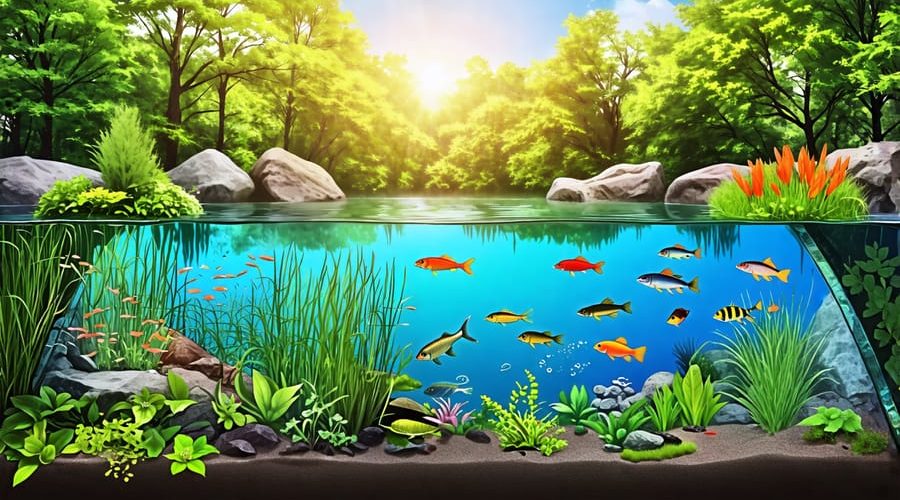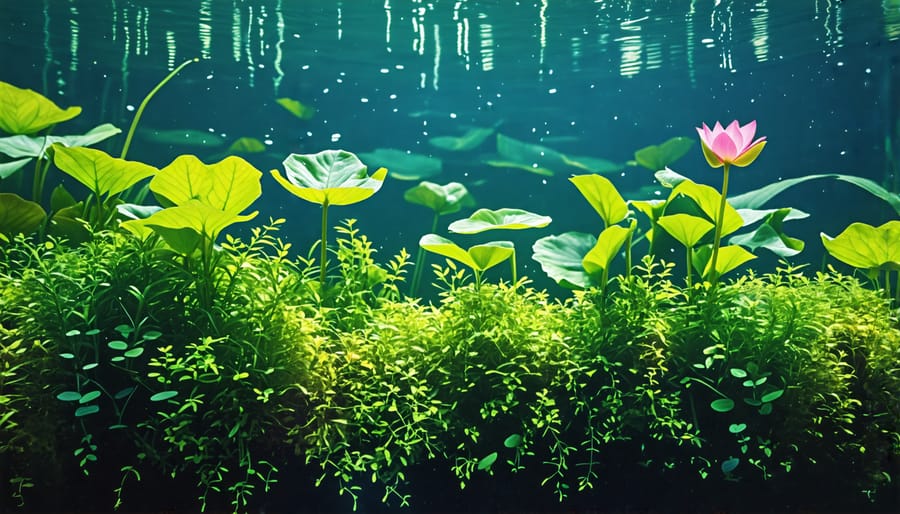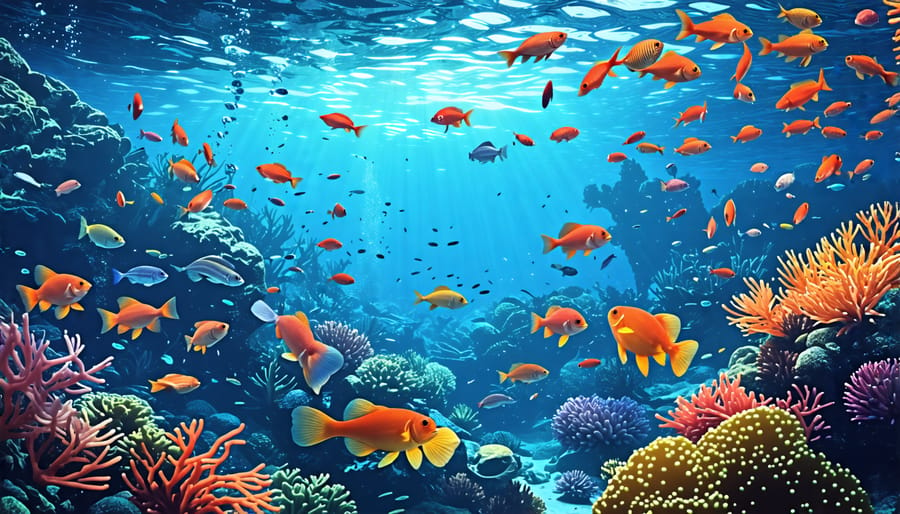
The 3 Crucial Pond Zones Every Water Gardener Must Know
Dive into the depths of a pond’s mysterious realms, where sunlight, shadows and stillness define unique zones teeming with aquatic wonders. From the bustling shallows to the enigmatic abyss, each layer harbors its own complex ecosystem in a delicate balance. Uncover the secrets of the littoral, limnetic and profundal zones – distinct worlds within a world, interconnected in a captivating aquatic dance. Embark on an immersive journey through these hidden habitats, and discover the remarkable adaptations and relationships that allow life to flourish in every nook and crevice. A pond’s zones are more than mere divisions – they are intricate tapestries woven by nature’s masterful hand, inviting us to explore, understand and marvel at the extraordinary in the seemingly ordinary. Prepare to see ponds in a whole new light as we delve into the mesmerizing zones that make these aquatic microcosms so wondrously alive.

The Littoral Zone
Depth and Location
The littoral zone, or shoreline area, typically extends from the water’s edge to depths of around 6 feet (1.8 meters) in most ponds. This shallow, sunlit region is usually located along the perimeter of the pond, where the water meets the land. The exact depth and width of the littoral zone can vary depending on factors such as the pond’s size, shape, and slope of the bottom. In general, the littoral zone is where you’ll find the majority of aquatic plants and wildlife, as it provides an ideal environment for growth and habitation.
Plants of the Littoral Zone
The littoral zone of a pond is where the magic happens for water gardeners, as it supports an incredible variety of plant life. Emergent plants like cattails, rushes, and sedges thrive here, rooting in the shallow waters and extending their foliage above the surface. These plants provide vital habitat for wildlife and help stabilize the shoreline. Submergent plants, such as pondweed and hornwort, grow entirely underwater, oxygenating the water and offering shelter for fish and other aquatic creatures. Floating plants like water lilies and lotuses add enchanting beauty to the pond’s surface with their vibrant blooms and glossy leaves. To create a stunning and balanced littoral zone, consider incorporating a mix of Plants of the Littoral Zone, such as pickerelweed, arrowhead, and water iris. As you select plants, keep in mind their growth habits, sunlight requirements, and potential to spread, ensuring they complement your pond’s ecosystem. With a thriving littoral zone filled with diverse plant life, your pond will become a captivating oasis that attracts wildlife and provides endless enjoyment for years to come.

Wildlife Habitat
The littoral zone is teeming with life and serves as a vital habitat for countless pond creatures. This shallow, sunlit area provides the perfect conditions for aquatic plants to thrive, offering food and shelter for fish, amphibians, reptiles, birds, and insects. Submerged vegetation like pondweed and water lilies act as nurseries for young fish and tadpoles, while emergent plants such as cattails and rushes provide cover and nesting sites for waterfowl. The littoral zone’s rich plant life also supports a diverse community of invertebrates, including snails, water beetles, and dragonfly nymphs, which in turn become prey for larger pond inhabitants. By maintaining a healthy littoral zone with a variety of native aquatic plants, you can create a vibrant and self-sustaining ecosystem that attracts and supports a wide array of fascinating pond wildlife.
The Open Water Zone
Characteristics
The open water zone, also known as the limnetic zone, is the deepest part of a pond, typically reaching depths of 3 feet or more. This zone receives the least amount of sunlight, as light penetration diminishes with depth. As a result, photosynthesis is limited, and oxygen levels are lower compared to the shallower zones. The open water zone is often too deep for most aquatic plants to grow, but it provides a habitat for fish and other aquatic animals that require cooler temperatures and lower light levels. Microscopic algae called phytoplankton drift in this zone, forming the base of the pond’s food chain. The open water zone plays a crucial role in the pond ecosystem by providing a stable environment for aquatic life and helping to regulate the pond’s temperature and oxygen levels.
Pond Life
The open water zone of a pond teems with fascinating aquatic life. Fish like koi, goldfish, and mosquitofish thrive in this area, gracefully swimming through the clear waters. Amphibians such as frogs and newts also make their home here, often seen resting on lily pads or diving beneath the surface. Invertebrates, including water boatmen, diving beetles, and dragonfly nymphs, play crucial roles in maintaining the pond’s ecosystem balance. Daphnia, or water fleas, are tiny crustaceans that help keep the water clear by filtering algae and debris. Speaking of algae, the open water zone is where free-floating phytoplankton flourishes, providing food for many pond life and contributing to the overall health of the aquatic environment. Together, these diverse creatures create a vibrant and captivating display in the heart of your pond.

Maintaining Water Quality
To keep the open water zone of your pond healthy and clear, it’s essential to manage nutrient levels, oxygen, and water clarity. Excess nutrients from fish waste, decaying plant matter, and runoff can lead to algae blooms, murky water, and low oxygen levels. Regularly test your water quality and take action if needed. Install a pond aerator or fountain to increase oxygen levels and circulation. Use beneficial bacteria and enzymes to break down organic matter and control algae growth. Consider adding submerged plants like hornwort or anacharis to absorb excess nutrients. Maintain a balanced ecosystem by avoiding overfeeding fish and removing debris. With proper maintaining water quality practices, you’ll enjoy a thriving, crystal-clear pond that’s a delight to behold.
The Bottom Zone
The Benthic Layer
The benthic layer, or pond bottom, is a crucial zone where vital decomposition processes take place. Organic matter like fallen leaves, dead plants, and fish waste settles here, providing a rich food source for bacteria, fungi, and bottom-dwelling organisms. These decomposers break down the organic material, releasing nutrients back into the water to be recycled by plants and algae. The benthic layer also serves as a habitat for burrowing creatures like insect larvae, snails, and worms, which play a role in the pond’s food web. The depth and composition of the pond bottom can vary, from shallow, muddy areas to deeper, rocky zones. Maintaining a balanced benthic layer with a diverse community of decomposers is essential for the overall health and clarity of your pond’s ecosystem.
Bottom-Dwelling Organisms
The murky bottom of a pond is teeming with life, including bacteria, fungi, worms, insects, and other decomposers. These tiny organisms play a crucial role in breaking down dead plant matter and debris, recycling nutrients back into the ecosystem. Bacteria and fungi colonize the muck, while aquatic worms and insect larvae burrow through the sediment, aerating it and furthering decomposition. Scavengers like crayfish and snails also inhabit the bottom, feeding on the decaying material. This rich layer of life forms the foundation of the pond’s food web, supporting the survival of plants and animals in the zones above.
Nutrient Recycling
The bottom zone of a pond is where decomposition takes place, breaking down dead plant material, fish waste, and other organic matter. This process is essential for nutrient recycling in the pond ecosystem. Beneficial bacteria and fungi in the sediment layer consume the decaying matter, releasing nutrients like nitrogen and phosphorus back into the water. These nutrients then circulate to the upper zones, nourishing aquatic plants and algae, which in turn provide food and oxygen for fish and other pond inhabitants. Without this vital recycling process, nutrients would become trapped in the bottom sediment, leading to an unhealthy and imbalanced pond ecosystem.
Conclusion
In conclusion, understanding the unique characteristics and roles of each pond zone is crucial for maintaining a thriving and balanced aquatic ecosystem. The littoral zone provides shelter and nutrients, the limnetic zone allows sunlight penetration for photosynthesis, and the profundal zone supports decomposition and nutrient recycling. These zones work together harmoniously, each contributing to the overall health and stability of the pond.
By recognizing the importance of these interconnected zones, pond enthusiasts can create and maintain a diverse and vibrant environment that supports a wide array of plant and animal life. A well-balanced pond not only enhances the aesthetic appeal of your outdoor space but also contributes to the conservation of local biodiversity.
As you embark on your pond management journey, keep in mind the delicate balance between these zones and strive to create a self-sustaining ecosystem that will bring you joy and tranquility for years to come.
